What Is Mac Task Manager Equivalent And How To Use It – Setapp
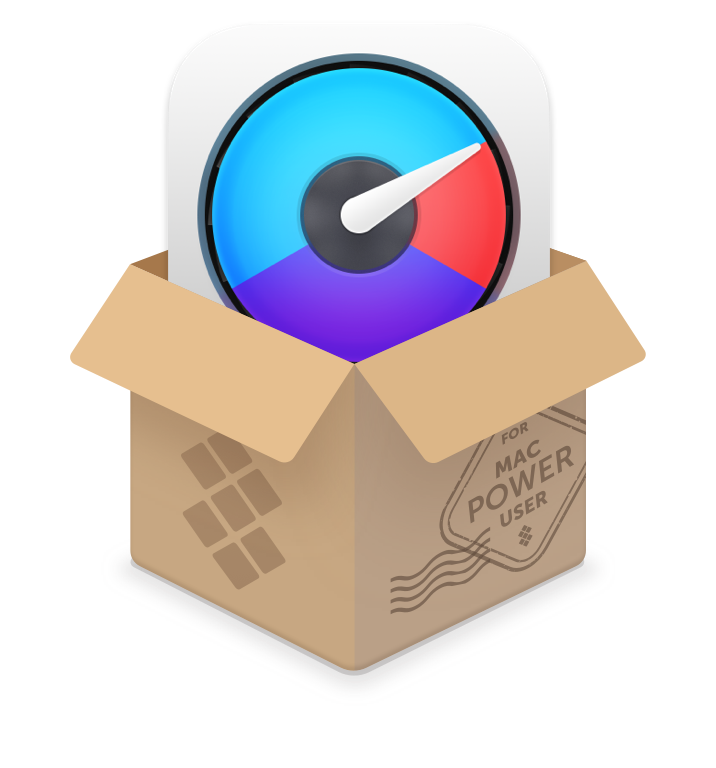
By the virtue of being on Windows for many years, most users develop a muscle memory in hitting Ctrl + Alt + Delete when their PC acts up to open the Task Manager and restart a stalling process. It’s just part of daily life. But what’s the Mac equivalent of Task Manager?
Some say there’s no need for the Apple Task Manager, as Macs run better and smoother than their PC counterparts. And while this is largely true, from time to time you absolutely need a way to force quit Mac processes to keep it in good shape.
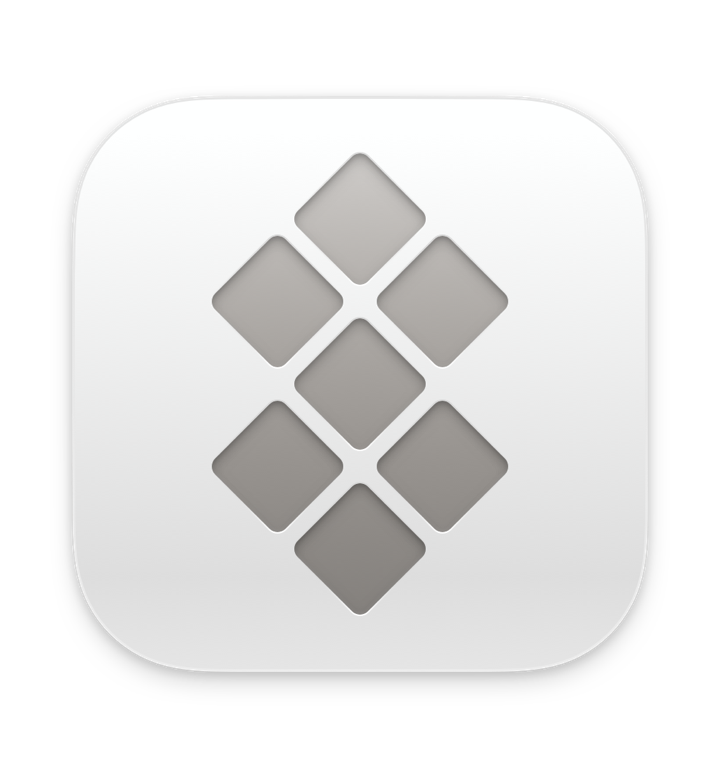
Try free
So how to get Task Manager on Mac? Easy! There’s already an OSX Task Manager pre-installed (or rather the Mac equivalent of Task Manager) — called Activity Monitor, which you can find in Applications > Utilities.
Below is a guide for long-time Windows users in the process of onboarding to Mac and hence wondering, “Where is Task Manager?” “How to get Task Manager on Mac?” “How to open Task Manager on Mac?” Mac users who haven’t used the MacBook Activity Monitor in a while will find the instructions on how to halt Mac processes useful as well.
Mục lục bài viết
What is Activity Monitor?
Activity Monitor is basically an alternative to Windows Task Manager, a utility that shows how much memory your Mac processes are using and which apps are currently active (even if they aren’t open), letting you force quit stalled ones if you can’t close them the usual way.
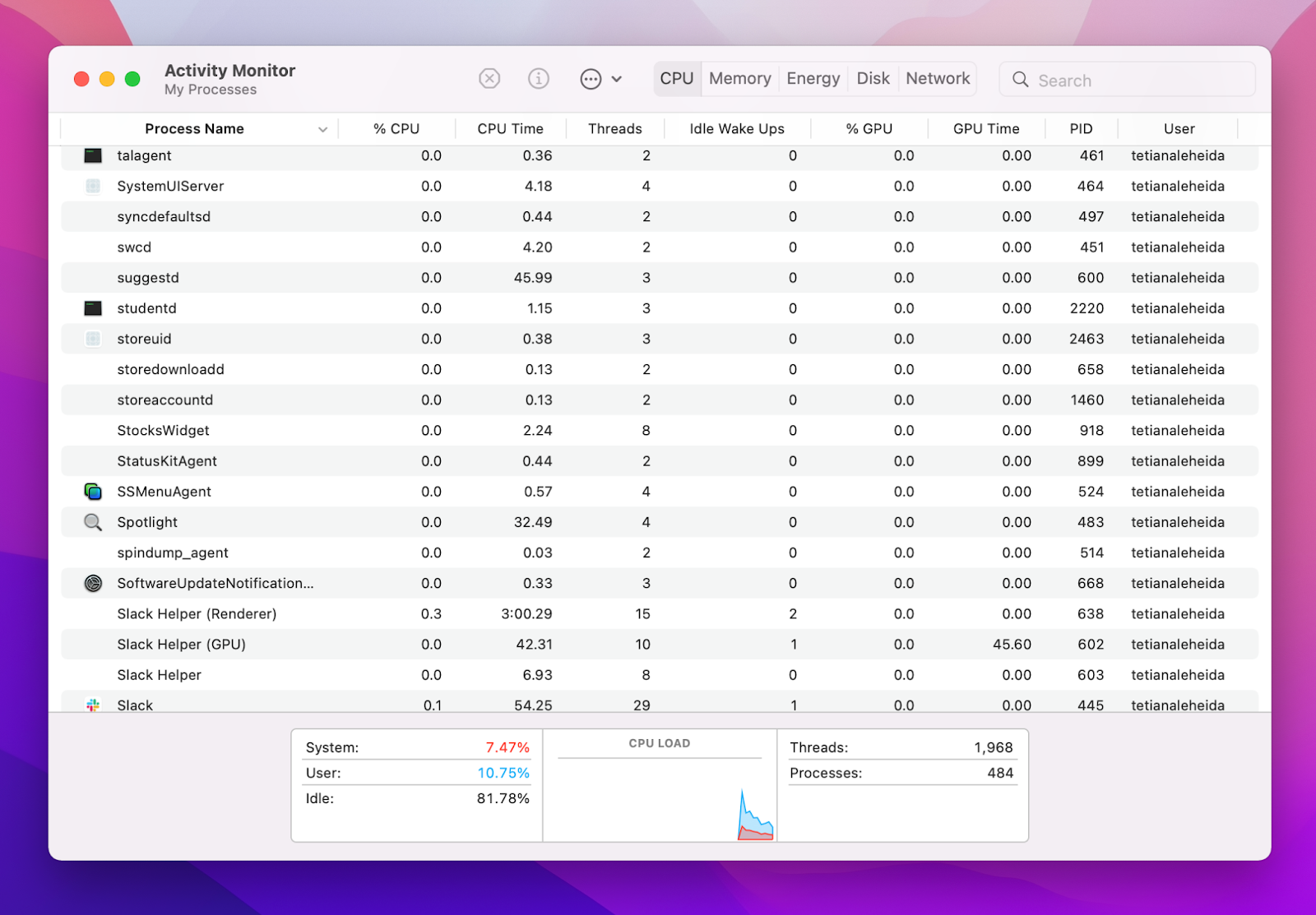
If you’ve never used this task manager for Mac before, it can be quite a lot to take in. But don’t worry, we’ll discuss how to use Activity Monitor in a moment.
How to open Task Manager on Mac?
Unfortunately, there are no keyboard shortcuts like Ctrl + Alt + Delete to open your Mac process monitor, but launching Activity Monitor is still quite simple. Pick one of the three ways to do it.
Open Activity Monitor from Spotlight:
- Press Command + Space to open Spotlight
- Start typing Activity Monitor
- Once Activity Monitor comes up highlighted, hit Enter or click on it.
Open Activity Monitor from Finder:
- Click on Finder in your Dock
- Navigate to Applications in the sidebar
- Choose Utilities in the Applications window
- Double-click on the Activity Monitor icon
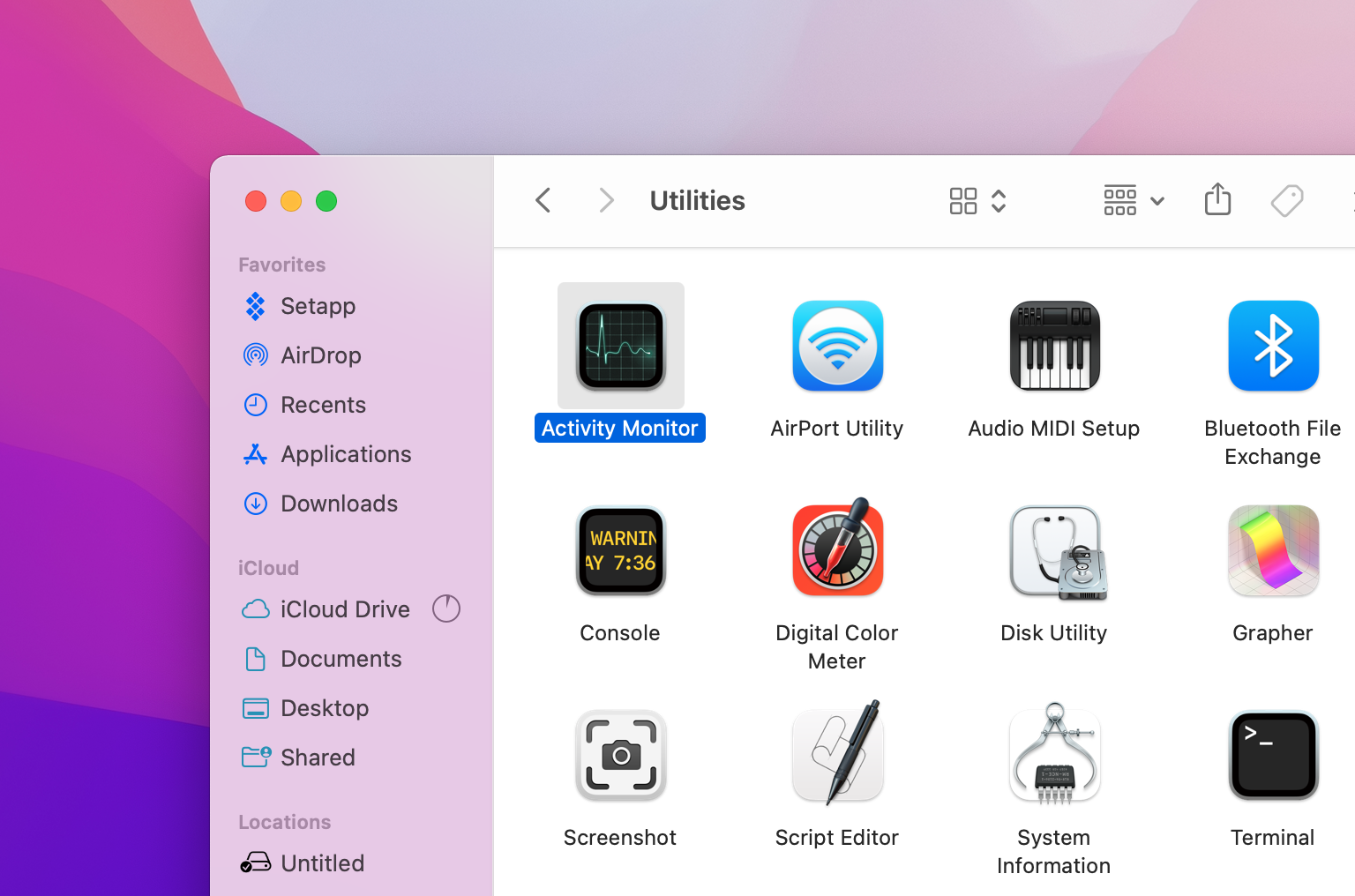
Open Activity Monitor from Dock:
If you’ve been having recurring troubles, setting up Activity Monitor in your Dock is absolutely worth doing. It’s essentially a handy one-click Mac Task Manager shortcut.
But before you can open Activity Monitor from your Dock, you need to use one of the previous two methods first. Then, once Activity Monitor is active:
- Right-click on the Activity Monitor icon in your Dock
- Select Options
- Choose “Keep in Dock”
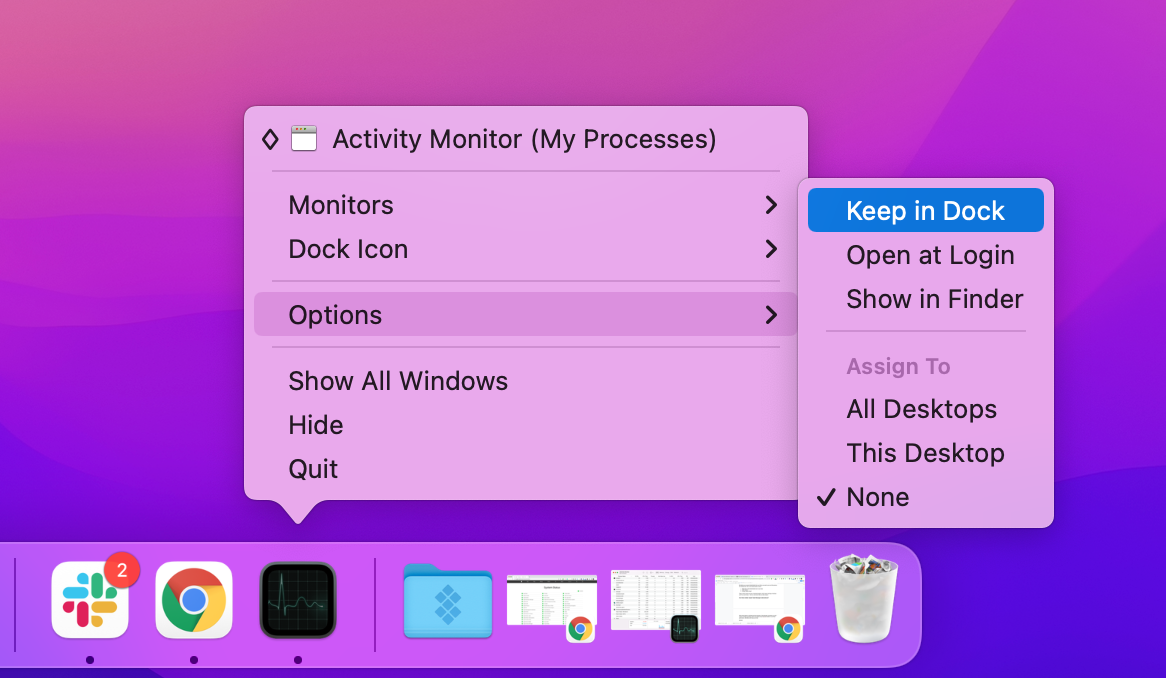
“Keep in Dock” should now have a checkmark beside it, which means it will stay in the Dock even if you quit the app — then you can launch it like any other program.
Are there better Apple Task Manager alternatives?
While Activity Monitor is definitely the Mac equivalent of Task Manager, sometimes you want to monitor your Mac’s processes a little more closely and get real-time updates on your Mac’s performance. iStat Menus will help you do that.
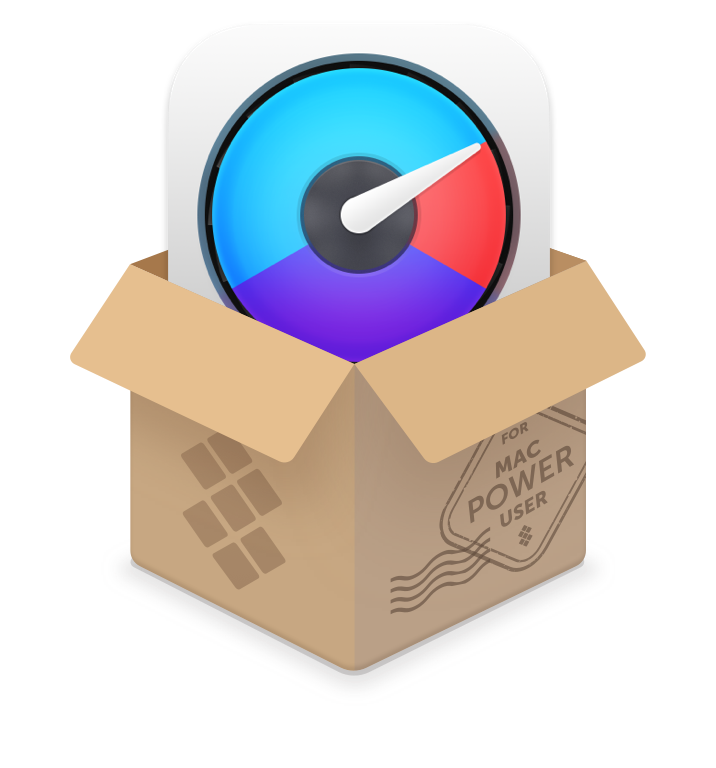
Try free
iStat Menus gives you fast updates on what’s using your Mac’s resources at just a glance. Working hard right from the menu bar, the app displays graphs for nearly every function of your Mac, so you can instantly find out what’s wrong or just notice how your Mac behaves in different conditions.
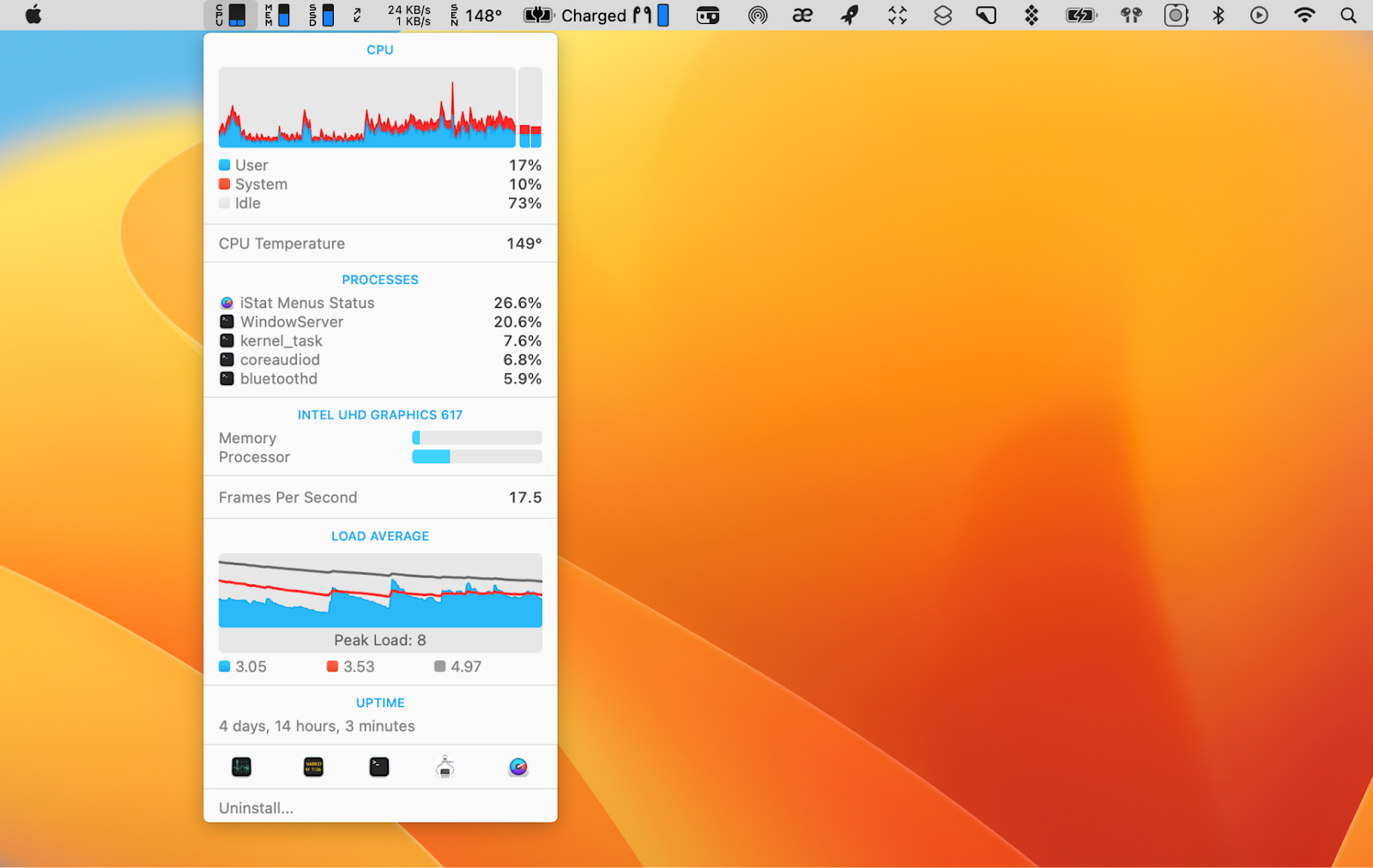
You can choose which iStat Menus trackers to install, depending on the tasks you want to keep your eye on. Once you install them, they will be available in the menu bar, just a click away, so you don’t have to open any apps to know how your Mac is doing.
Here are the key things you can monitor with iStat Menus:
- CPU an GPU, with detailed history graphs, uptime, the apps that consume a big chunk of CPU, etc.
- Memory usage
- Network usage and bandwidth breakdown for top apps
- Sensors, including temperature, fans, CPU and GPU frequency
- Used disk space and disk activity
- Battery and power.
It’s likely that if you need a macOS Task Manager it’s because your computer is running slowly. But don’t just address the symptom, address the cause. Instead of quitting processes, get your Mac to run smoothly overall with CleanMyMac X.
CleanMyMac X is optimization software that’s designed to improve your Mac’s performance with just a few clicks. It removes user and system caches, protects against malware, uninstalls unwanted software — all to bring your Mac back up to speed. If there’s an app constantly stalling or hanging up, it’s probably due to a conflict with some other process — CleanMyMac X will clear it up right away:
- Open the app
- Navigate to System Junk > Scan
- Review Details to see what might be wrong and hit Clean
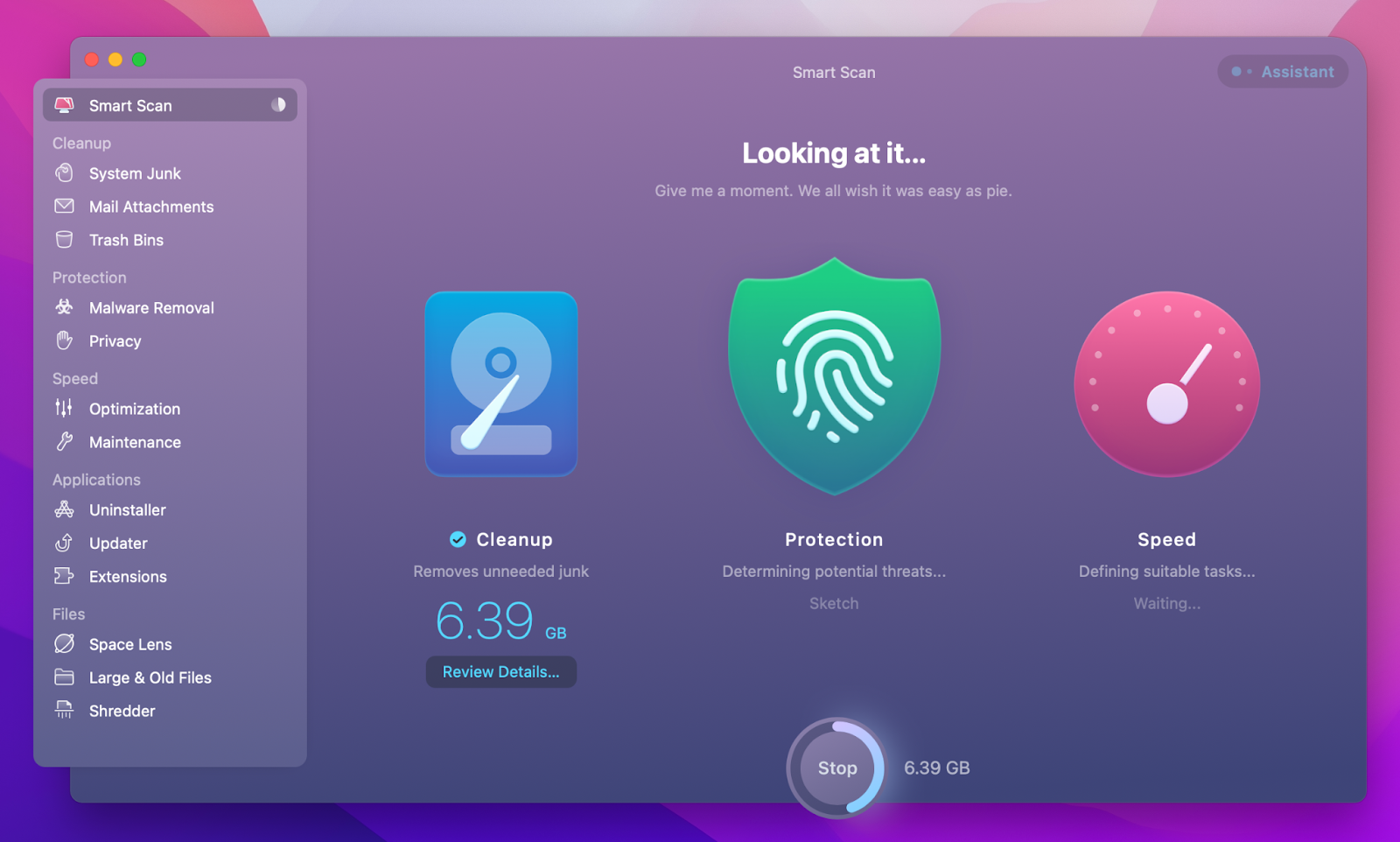
How to force quit an application?
If you’re looking for answers regarding the Mac OS Task Manager, chances are it’s because some app has stalled on you. Sometimes, you won’t even know which app is causing the problem. Here’s how to easily quit apps and fix the problem:
- Open Quit All via Setapp
- Select the apps (including background apps: Settings > View background apps)
- Hit the Quit All button.

Quit All’s main advantage over macOS force quit is that it can deal with tricky background processes that are not so easy to tame. Plus, Quit All will always prompt you to save all the unsaved changes before quitting apps.
Another solution for force quitting select apps on Mac is to use Activity Monitor:
- Navigate to either the CPU or the Memory tab and find the slow process
- Click to highlight
- Press the X icon in the top toolbar
- Confirm that you’re sure you want to quit the process.
The other force-quit option is from the Force Quit Applications window:
- Press Command + Option + Esc
- Highlight the program you want to quit
- Click Force Quit
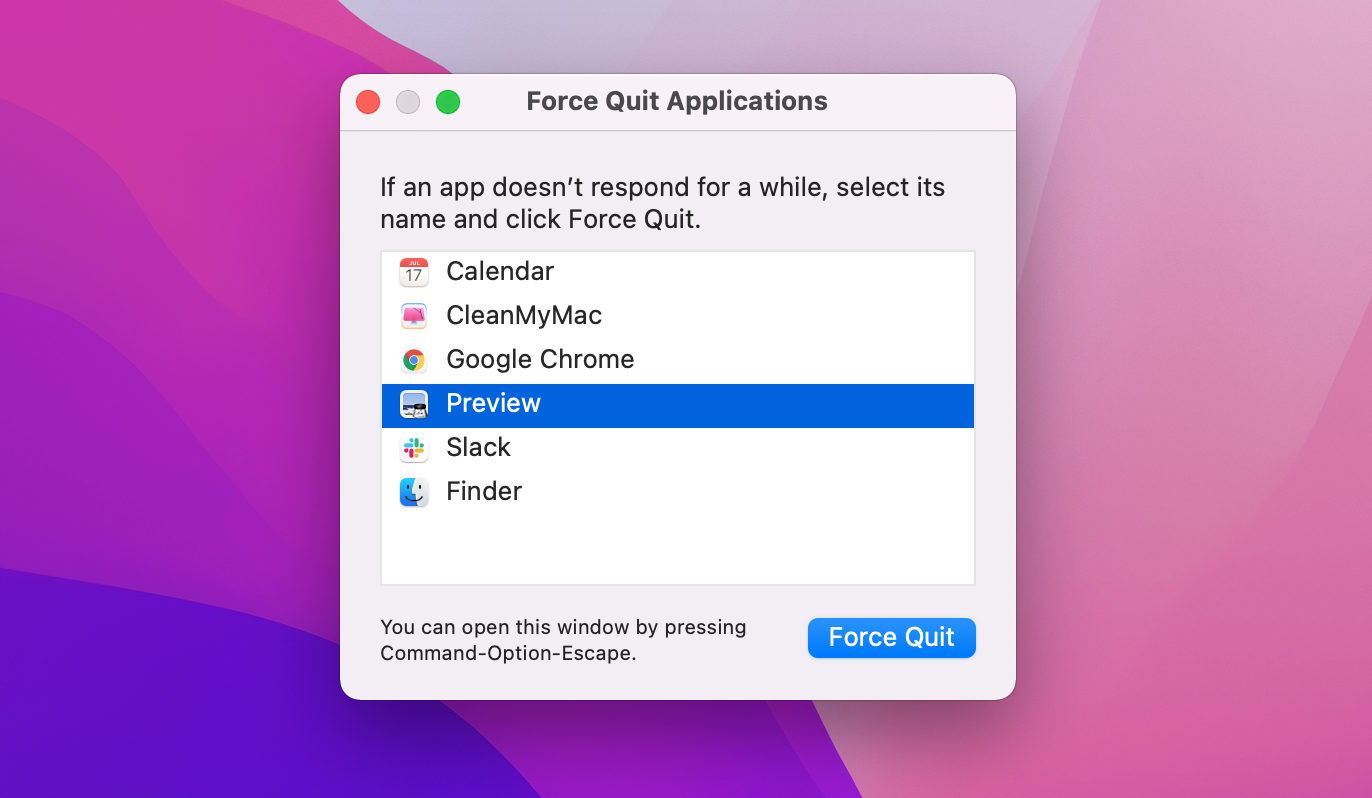
Check out: Mac startup programs
How to use Activity Monitor on a Mac
If you decide to use Activity Monitor as your task manager on Mac, you should learn how to work with its monitor indicators.
CPU usage
The first tab in Activity Monitor lists all the processes that are currently taking up your Mac’s CPU, displays the exact percentages of power they are consuming, and notes how long they have been running.
You can sort all processes in Activity Monitor by CPU usage, from highest to lowest, by choosing View > All Processes and clicking on the %CPU column.
There’s a process you might notice in the CPU tab called “kernel_task” that could be taking a large share of resources. Don’t panic and don’t shut it down! The process simply ensures your CPU isn’t working too hard by forcing other memory-intensive Mac processes out. As a result, it might seem like one of the heaviest processes on the list. Similarly, “mds” and “mdworker” help index files for the Spotlight search, which sometimes spikes their appetite.
Check RAM usage
The second tab reflects how much RAM every process is taking up, which could be the most useful indicator of all. RAM is directly responsible for the speed of your Mac, so getting rid of heavy users is the fastest way to speed things up.
Another interesting feature of the Memory tab is the RAM Pressure Gauge at the bottom. If the bar is green then your Mac’s RAM isn’t being taxed too much. But if it turns red — consider buying additional memory for your machine.
Tip: To decrease CPU and RAM consumption by apps, use App Tamer, a menu bar utility that spots heavy consumers on your Mac and slows them down automatically.
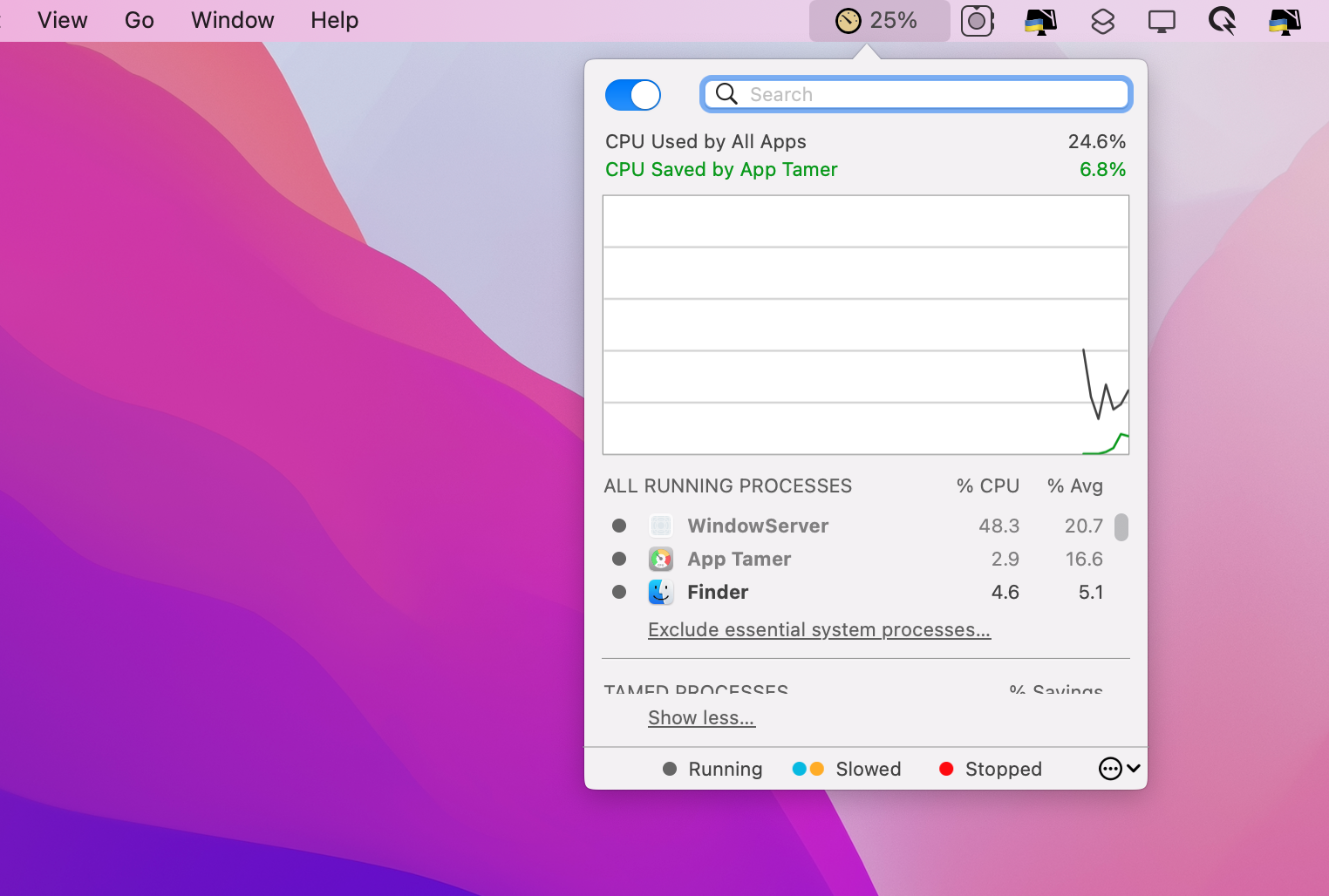
Check for energy use in macOS task manager
The middle tab comes in handy when you’re using your MacBook without plugging it in. Here you can easily find apps and processes that drain your battery and quit them to extend your screen time.
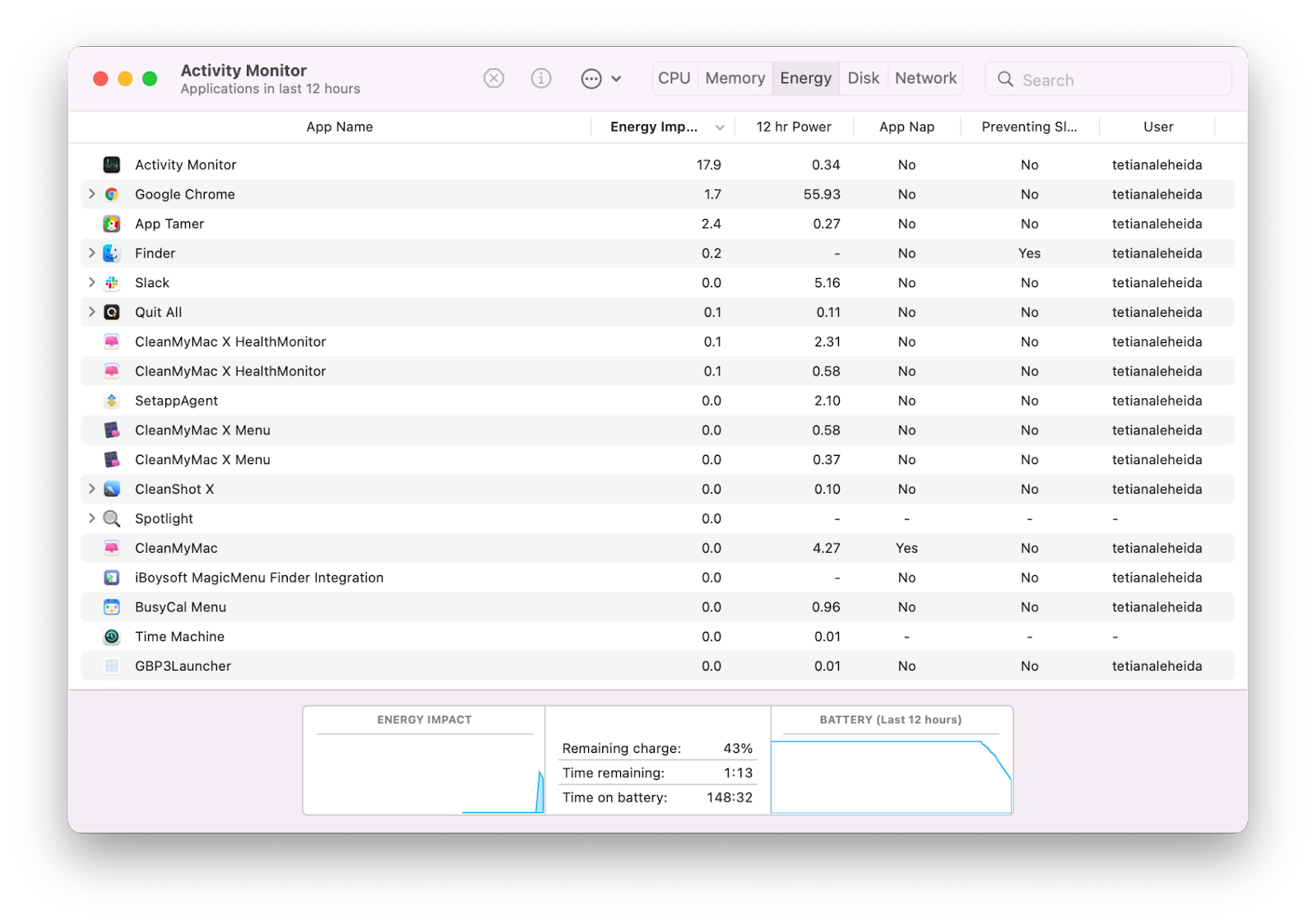
Tip: check Avg Energy Impact — this will tell you which apps consume the most energy on average. If you don’t use those apps often, consider getting rid of them.
Disk activity on a Mac
Even though this tab might not be the most useful one for daily use, it still shows how various processes interact with your hard drive, rewriting data. If you ever happen to install some malware, you might find its processes here as large outliers and quit them just in time.
Check network activity on a Mac
The last tab in Activity Monitor reflects the amount of data received and sent by every app you have installed. Again, it’s generally good for spotting outliers that might send too much data online.
Tip: TripMode is a great tool to install if you want to reduce data usage. Particularly great if you’re on the go or have a limited data plan.
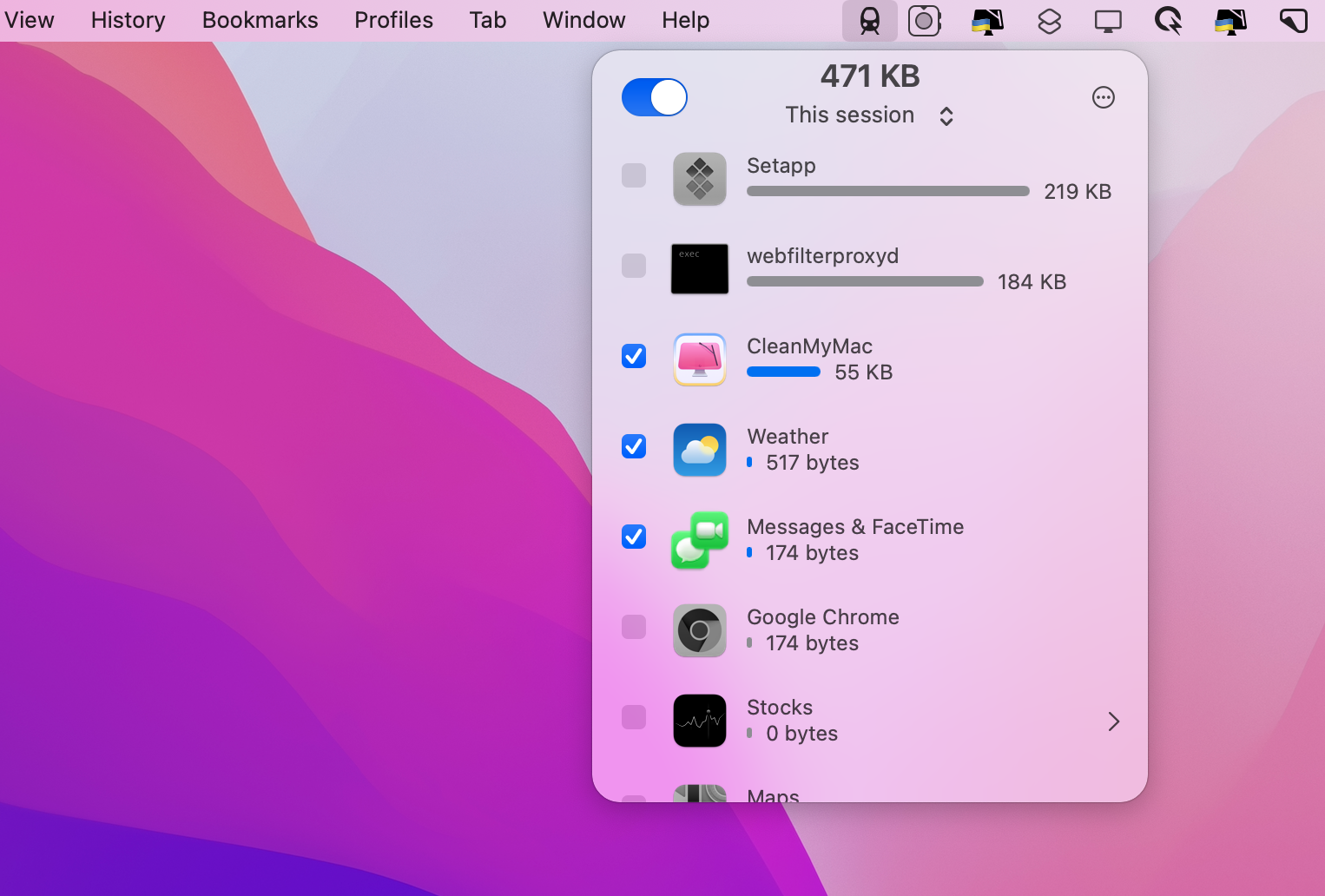
Inspect processes in Activity Monitor
If you want to dive deeper into a specific process running on your Mac, highlight this process in Activity Monitor and press Command + I. Alternatively, go to View > Inspect Process. On the inspection screen, you’ll find information about how much CPU and memory this process is using, how long it is running, and more.
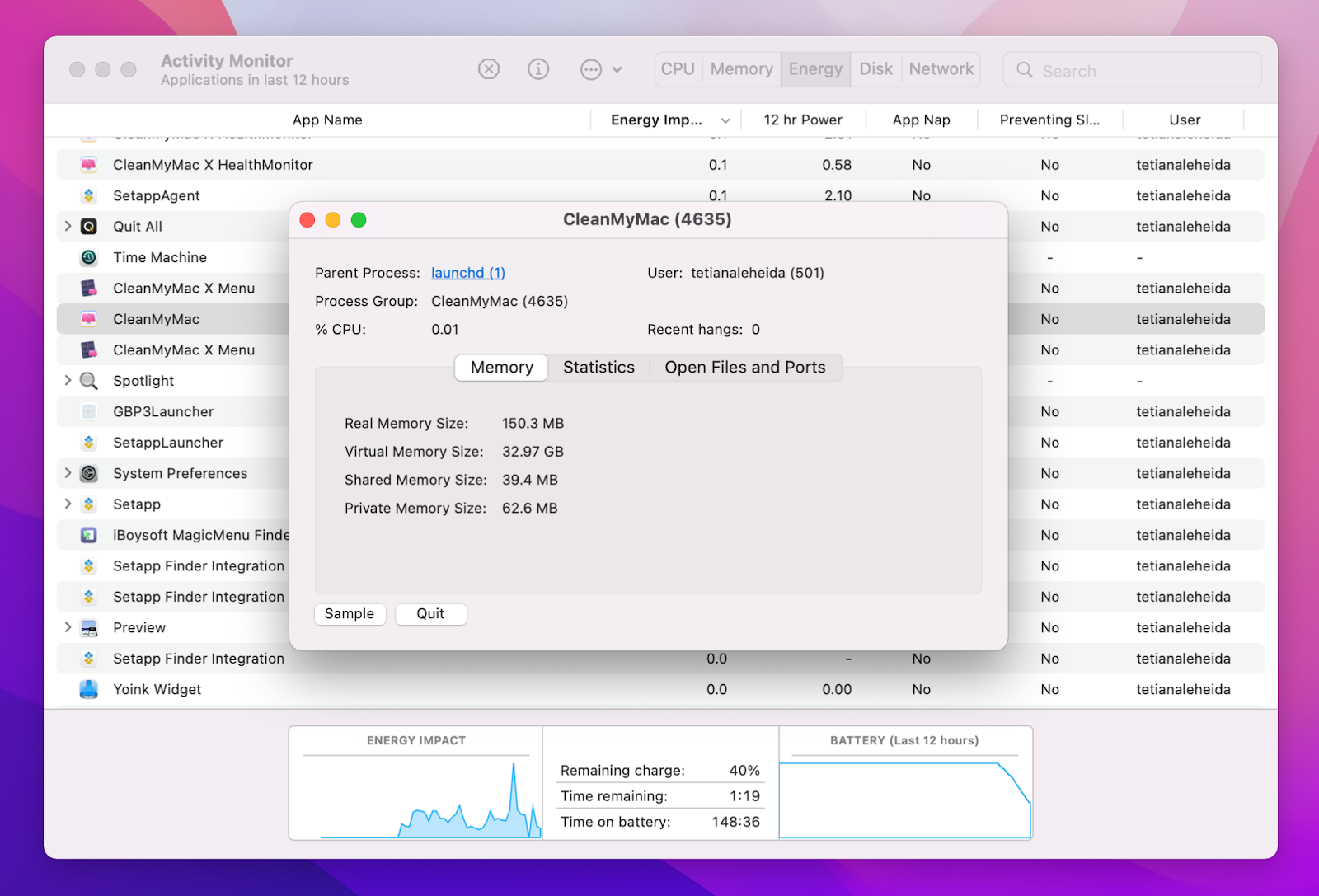
Enhance your Mac’s performance with one Mac toolkit
Knowing how to use your MacBook Task Manager to check on your Mac’s performance is essential, and following the tips above is a good start. The next step is to have the tools that will help fix Mac performance in case there are any issues.
Setapp has it all — a toolkit with advanced task manager iStat Menus and a Mac optimizer CleanMyMac X. Plus, with Setapp, you get many small utilities such as Quit All for force quitting apps, App Tamer for reducing CPU usage, TripMode for optimizing network activity, and more. The toolkit is available for a free 7-day trial.











